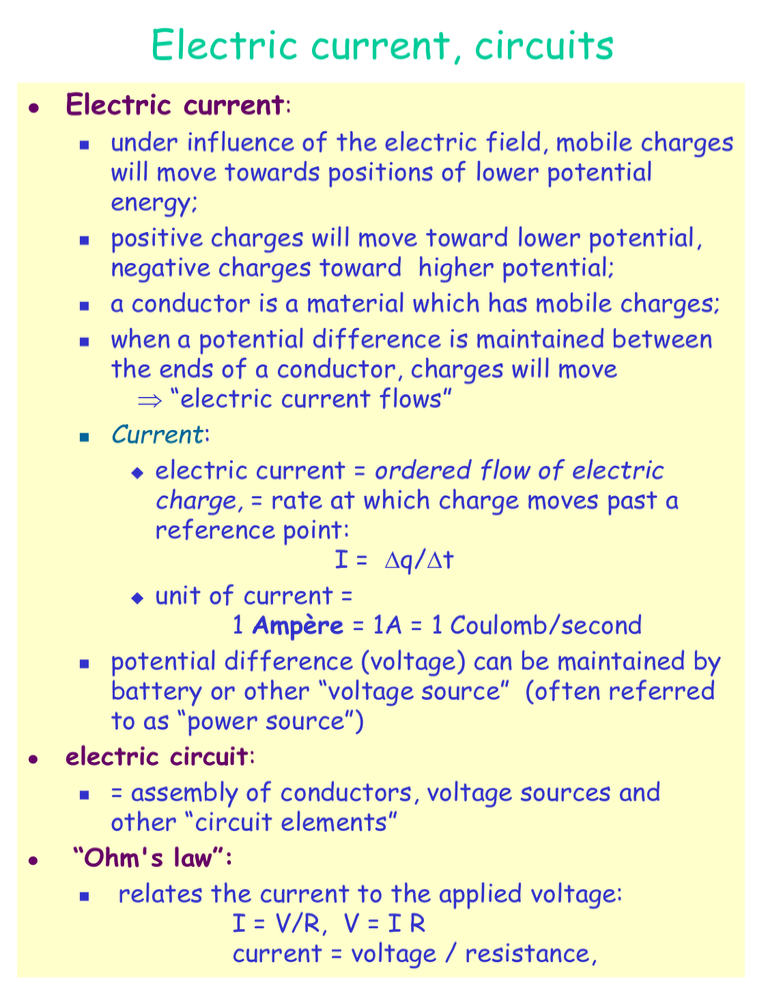electric current
advertisement

Electric current, circuits Electric current: under influence of the electric field, mobile charges will move towards positions of lower potential energy; positive charges will move toward lower potential, negative charges toward higher potential; a conductor is a material which has mobile charges; when a potential difference is maintained between the ends of a conductor, charges will move “electric current flows” Current: electric current = ordered flow of electric charge, = rate at which charge moves past a reference point: I = q/t unit of current = 1 Ampère = 1A = 1 Coulomb/second potential difference (voltage) can be maintained by battery or other “voltage source” (often referred to as “power source”) electric circuit: = assembly of conductors, voltage sources and other “circuit elements” “Ohm's law”: relates the current to the applied voltage: I = V/R, V = I R current = voltage / resistance, Resistance, power power consumption in a circuit: where “resistance” is a measure for the opposition against charge flow within the conducting material (e.g. due to collisions with atoms, other charge carriers,..) unit of resistance = 1 ohm = 1 = 1 V/A due to resistance, not all electric potential energy is converted into kinetic energy of charge carriers and eventually useful work - some (or all) of it is “dissipated” as heat when current is allowed to flow, charges move from higher potential energy to lower potential energy; total change in potential energy = amount of charge moved x voltage = q · V; this change in potential energy can be used to do work and/or is converted into heat. loss in potential energy has to be made up by energy supplied from the power source; power P = (energy converted) / time = q ·V /t = V ·(q/t) = V ·I power = current x voltage under the influence of a voltage ( electric field) applied across a conducting medium, a current (of positive charges) flows from higher to lower voltage. The potential energy lost by the charges is converted into work and/or heat, and has to be replenished by the “power source”.




